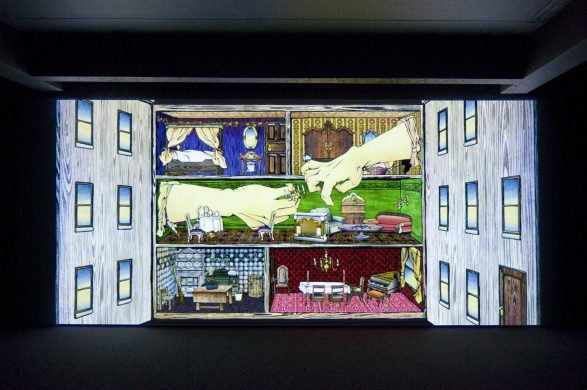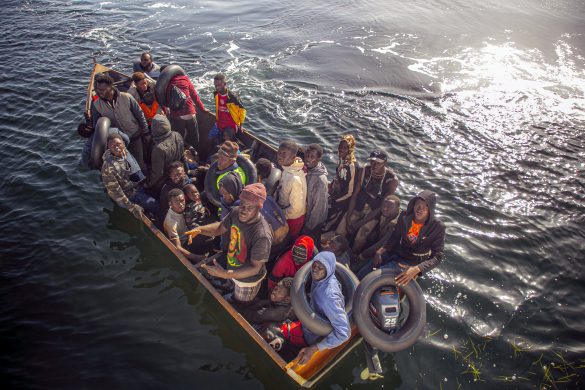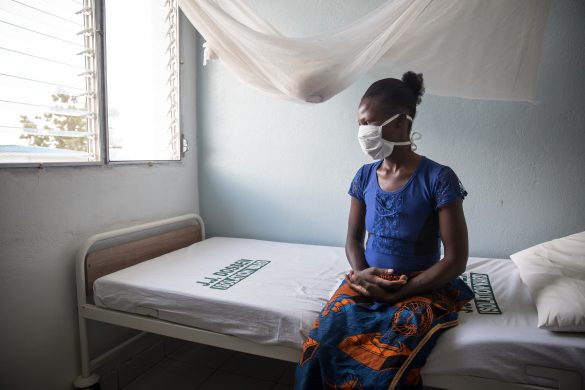I begyndelsen af august kunne haitianerne drage et lettelsens suk.
Det tropiske regnvejr Emily snittede kun hovedstaden Port-au-Prince, hvor flere end 600.000 stadig lever i lejre efter jordskælvet for halvandet år siden.
GENEVA, 9 August 2011 (IRIN): But with almost 4 months to go until the end of the Atlantic hurricane season, humanitarian agencies say the plight of the camp dwellers remains a major concern.
“We’re still in the storm season and we are expecting three or four big storms,” said Margaret Stansberry, deputy head of the International Federation of Red Cross and Red Crescent Societies (IFRC).
The number of people living in camps has fallen significantly from 1.5 million last year, but remains extremely high. 18 months after the earthquake devastated the Caribbean nation, an estimated 640,000 people still live in about 1,000 camps, most of them in and around the capital.
“We can’t be complacent; 640,000 people living in camps a year-and-a-half after the earthquake is something significant,” Stansberry told IRIN.
The crowded camps are also prone to diseases such as cholera.
Ten days of heavy rains in June contributed to a significant spike in cholera cases that lasted about five weeks, before the number of new cases started dropping again. Cholera has killed 5,899 people since it broke out in Haiti in October 2010. A total of 388,958 cases has been recorded, according to Pan American Health Organization data.
Haiti, one of the world’s poorest countries, is still struggling to recover from the January 2010 earthquake that killed more than 200,000 people.
International reconstruction efforts remain slow and arduous, according to experts, who say a political stalemate and insufficient aid coordination are partly to blame.
The hundreds of thousands living in camps say they want to move out but have nowhere to go.
94 per cent of those living in camps said they would leave if they had alternative accommodation, according to a survey conducted by the International Organization for Migration (IOM). Most said if they had to depart immediately, they would not be able to afford rent, or repair or replace their homes.
“The intention survey debunks the notion that people are living in the camps out of choice,” said Luca Dall’Oglio, IOM’s chief of mission in Haiti.
The study highlighted the need to step up efforts to help people out of the camps by building new houses, providing more financial support and creating income-generating activities and micro-credit facilities.
But land issues remain the overriding challenge in relocating the camp dwellers.
A complex and often opaque land tenure system makes it difficult to track down who owns a given piece of land, which in turn severely hampers efforts to build new housing.
“It’s always been a complicated issue and the earthquake made it worse,” IOM spokesman Jean-Philippe Chauzy told IRIN. “If you want to rebuild, you need to have a clear idea which land is available for reconstruction. The government needs to sort it out.”
But Haiti still has no proper government after parliamentarians rejected President Michel Martelly’s second and latest choice for prime minister on 2 August.
“The inability of political actors to find a rapid solution to this stalemate is having detrimental consequences on international assistance, on Haiti’s prospects for development, and most importantly, on its people,” said Canada’s representative to the UN, Keith Morrill, who led a four-day mission by the Economic and Social Council’s (ECOSOC) Ad Hoc Advisory Group on Haiti in June.
Moreover, a large number of those now living in camps did not have a place to live before the earthquake, according to Stansberry, who said there was a housing shortage pre-earthquake of 250,000 units.














